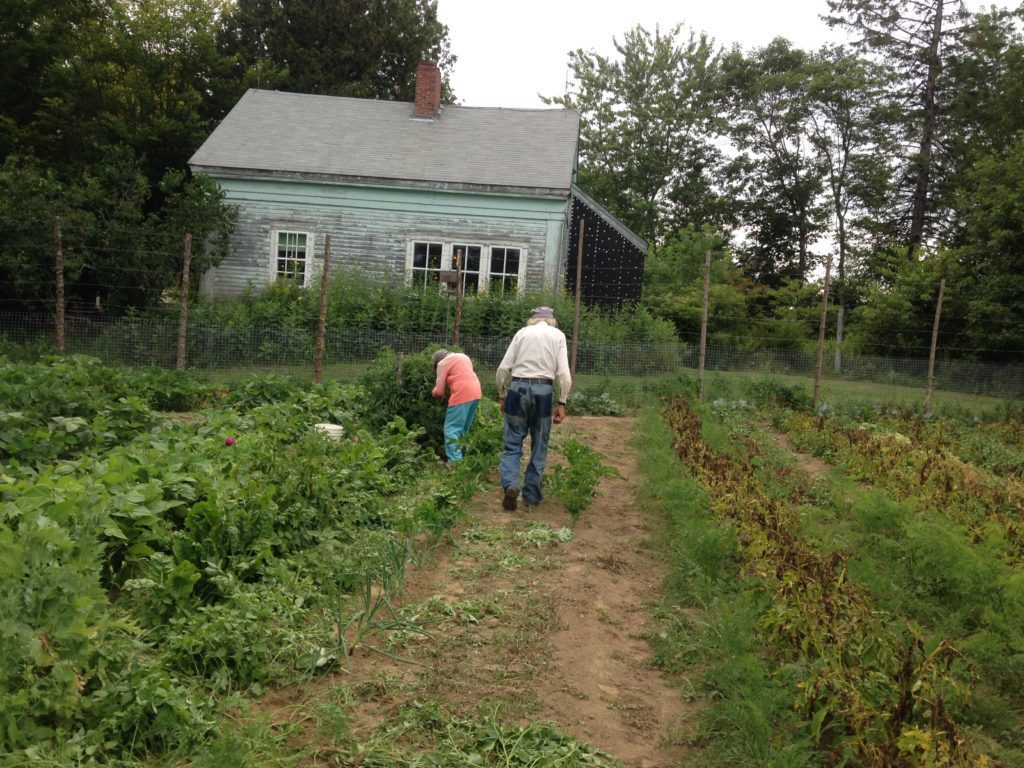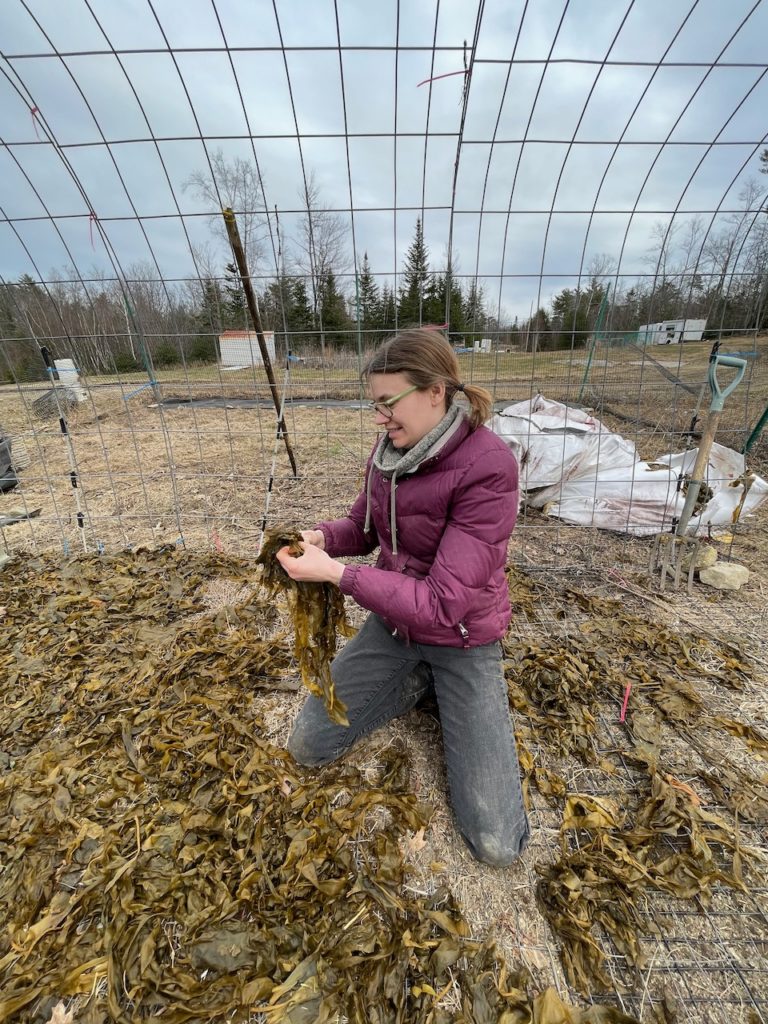Early this spring, we bush-hogged much of the overgrown brushy areas and a place for our first year garden. Time flew by as late winter days gave way to warmer weather. The first days of spring brought baby goats, litters of rabbit kits, hundreds of chicks, dozens of turkey poults, goslings and ducklings to care for. Snow melted to reveal a mucky brown landscape spurring anxiety to break ground for our first year garden.

Our homestead here in Bucksport, Maine was out of shape when we purchased it last summer. Old crumbling rock walls several feet wide sprawled along property survey lines—evidence of a long ago farm. Massive pines and red oak filled the wall edges revealing just how long the land had waited for another family to till it’s soil. The small mountain, we were told by locals, had been named Stubbs after a family who had settled here. An old granite foundation lay in ruin under an impossible tangle of blackberry and raspberry brambles alongside a small round pond.
With hundreds of seedlings started indoors I become increasingly anxious—and probably annoying— to break ground in the long forgotten and overgrown fields. The photo of the dirt road winding through pucker brush shows just how much work we had ahead of us.
After bush-hogging, woody debris from tall grasses, sweet-fern and saplings littered the landscape. It was a brown mess which looking nothing like a garden—but I could see it under there just waiting to be tilled and planted. I had dreamed of a big garden my whole life. Days were spent raking and burning piles of the stuff. Big rocks had to be pulled from the surface before a tractor could even come close to tilling the soil. We didn’t even know what soil type we were dealing with. The whole idea of a garden was both a stressful and exciting gamble. We had daydreamed about it through the long days of winter when the biggest stress was filing the wood stove.

Our neighbors were kind enough to let us borrow their tractor to break ground for our first year garden. We rented a rototiller which immediately broke. The rental place was more interested in selling it than fixing it—so we fixed it. The clutch to the tiller had gone and needed replacement. All we could order was a generic replacement which came with the driveshaft already attached. Of corse, the drive shaft was way too long and needed to be cut back to fit the tractor. After a few strategic cuts it slid in and we pinned the whole works back together.
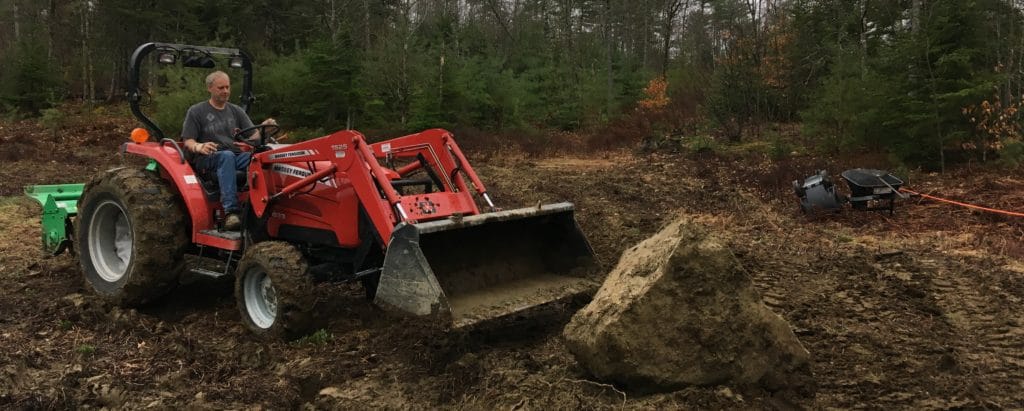
Up in the field my husband and I took turns tilling while the other picked rocks. We went over it and over it again until the soil was light and our feet sank down in. I took off my shoes and rejoiced in the feeling of the cool soil between my toes—a quintessential part of spring in Maine. Days were spent pulling rocks—some so big even the tractor had a hard time, and others had to be left. In a week’s time a long rock wall had formed along the wood line. I’d staked it out and run a line of flagging tape to stack it straight. A first year garden takes a LOT of work—but every following year required less if done right.
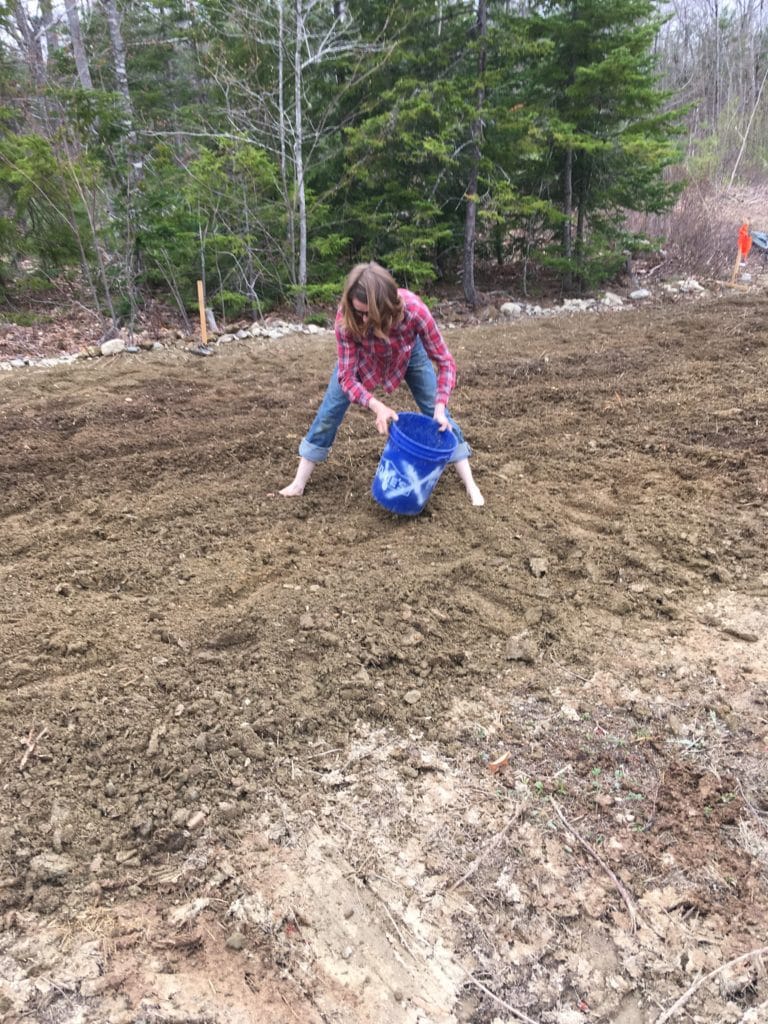
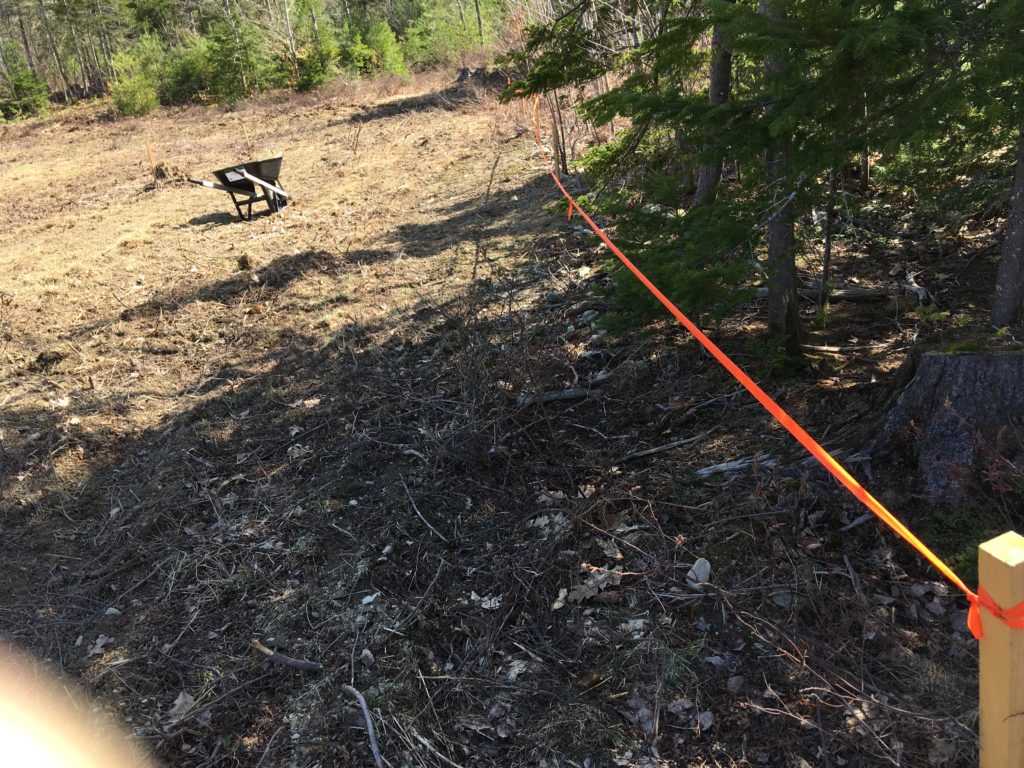
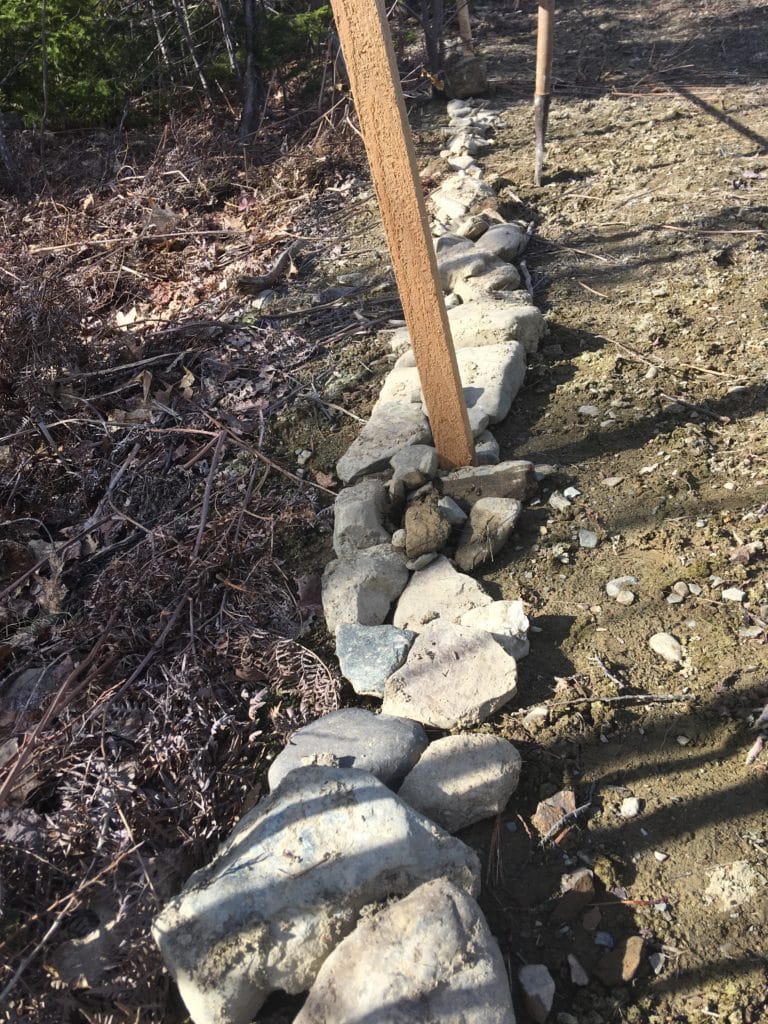
With the rocks removed and the soil mixed we were thrilled and relieved to find the perfect mix of silt, sand and clay—loam. It was just like we’d hauled in a dump load of high-end loam. Amazingly the topsoil was a foot and a half thick with some pockets of light gray clay below that, very common for Maine. My concern after having seen several bald outcrops of ledge on the surface on our new property that our garden spot would be too boney and thin to support the garden of my dreams. With a 100′ tape measure we laid out my ideal sized garden from several sketches based on the amount of seeds ordered, which was based on feeding our family and selling to local market. Space needed for plants, sunlight direction and companion painting were all taken into consideration. Kevin thought it was huge and that I’d have a hard time filling it—I accepted the challenge.
With long-term no-till style permaculture in mind for our first year garden, the next step was adding nutrients to the soil in the form of composted shavings, egg duds from the hatchery, and organic manure from a farm across the river. We borrowed a trailer and hooked it onto Kevin’s brand new truck—which by itself makes me nervous to drive, let alone towing a heavy trailer wider than the truck. We live atop a small mountain and the road to our home is steep, composed of sand and loose gravel, and riddled with little wash-outs in spring. The worst part is turning to pull in and out from the main road. It’s off a busy route and on a blind drive on a hill top—worse, a large outcrop of ledge sticks out blocking the view of oncoming traffic. Cars, logging trucks and oil tankers from a local filling station zip by.
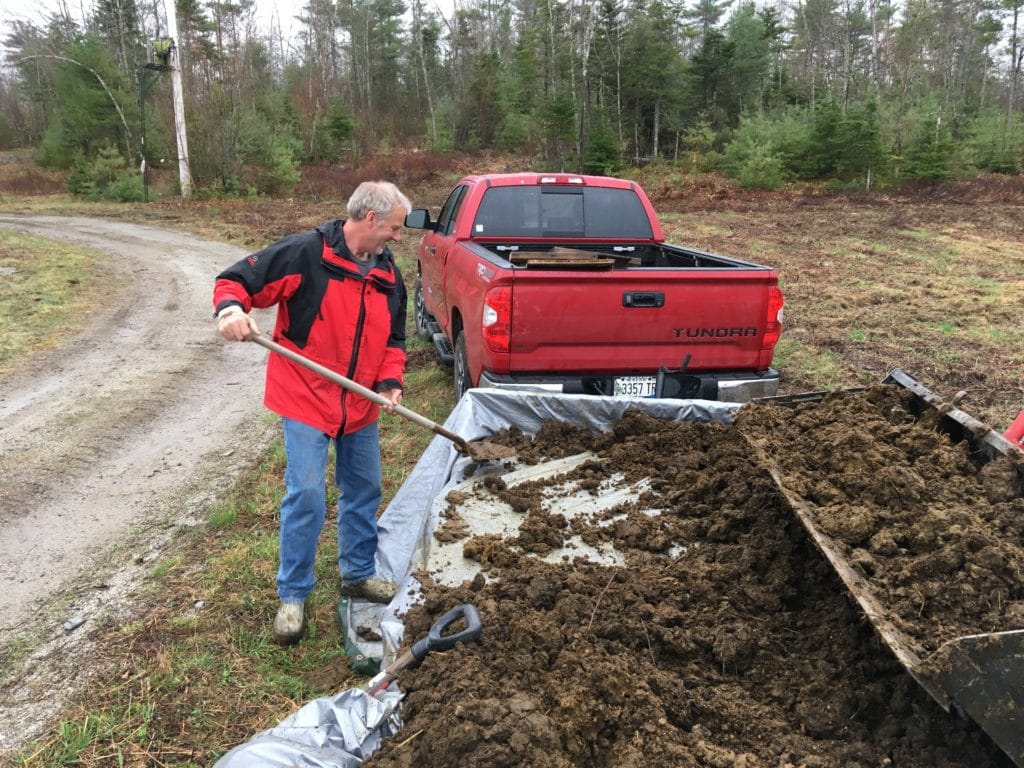
I managed to make it down the hill and into Bucksport’s quaint little downtown with issue—only to realize there was construction on an already narrow bridge I needed to cross. My eyes went from mirror to mirror between glimpsing at the road ahead of me. There had to have been six inches on either side of the borrowed trailer. Somehow I made it through and back over after the manure was loaded, and even up the steep, sharp turn back onto our road without ditching the whole works over the washed out edge.
Kevin helped shovel the fresh and partly composed manure mix into the tractor bucket and dump it over the field once he was out of work. He works full time from home at his desk while I make farm honey-do lists all day for things I can’t handle alone. He’s a damn good sport.
After tilling the organic matter into the soil of our first year garden our focus shifted to fencing before any seeds or seedlings went into the ground. Deer and wild turkey are thick here. We have also seen snowshoe hair, skunk, squirrels, chipmunks, and a host of other animals who would happily dine on our crops—in addition to our own goats.
 We cut poles from saplings which needed to be dropped anyhow. This made for a cost effective way to quickly put in a first year garden fence and our clear land at the same time. We will likely do something stronger or fortify the fencing in the future. The poles were limbed and spiked on one end, then driven into the ground with a pole pounder. This had to be done by hand while standing on the tractor’s bucket lifted a few feet in the air. More, smaller poles were leaned on them for trellis poles to support large vining plants.
We cut poles from saplings which needed to be dropped anyhow. This made for a cost effective way to quickly put in a first year garden fence and our clear land at the same time. We will likely do something stronger or fortify the fencing in the future. The poles were limbed and spiked on one end, then driven into the ground with a pole pounder. This had to be done by hand while standing on the tractor’s bucket lifted a few feet in the air. More, smaller poles were leaned on them for trellis poles to support large vining plants.

This was too much for my wirey 100-pound stature so Kevin did the hard work of beating the giant sticks into the ground every ten feet around the 76×30′ garden. After that came fencing—which took yet another day. In the end it was two full weeks before labor day when the cool-crops were seeded by hand.
By the first week of June all the seedlings, transplants and tender, warmer season crops were put in. Each variety in our first year garden’s hills and rows was lovingly labeled with over 120 plastic labels. A week later the sun and weather had worn the letter off every damn label. I used a different marker than the one in the labels package— which had come free with my order. Nothing is ever free.
With a frost scare in the forecast I heaped used rabbit bedding hay around all my tomatoes to better insulate the roots and laid bubble wrap over all of the still germinating rows of tiny herb seedlings. Now in late June our first year garden is full of life and even pushing up it’s first weeds. Our next garden update will cover our complex yet affordable gravity-fed irrigation system. Until then, happy gardening!

